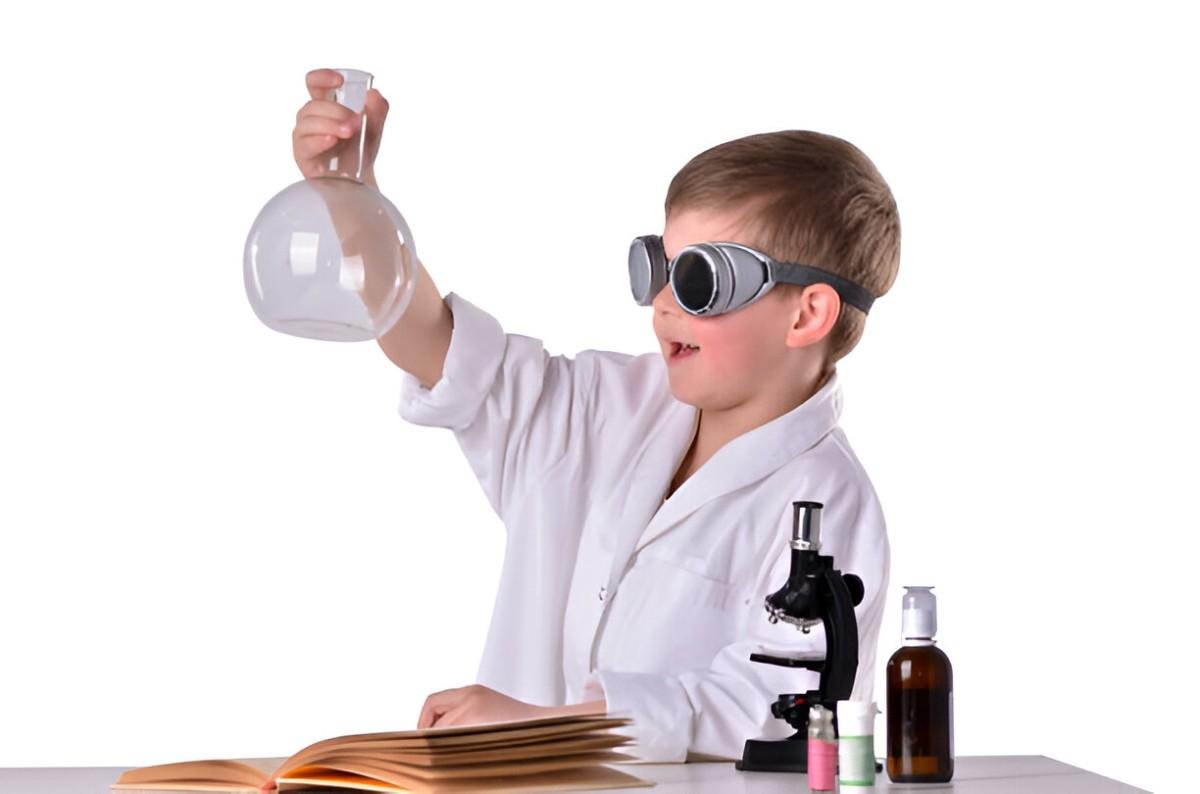As I think about what makes the best gift for a budding scientist, I can’t help but feel a sense of excitement. The right gift can do more than just entertain; it can spark a lifelong passion for discovery. Whether the young scientist is just starting to show interest in the natural world or is already exploring complex ideas, the gifts I choose can help foster curiosity, learning, and hands-on experimentation.
The challenge is to find gifts that aren’t just fun but also educational, engaging, and capable of nurturing a budding scientist’s interest. I’ll be sharing a variety of ideas in this article, exploring different categories of gifts from hands-on kits to books and tools that can help them dive deeper into the world of science.
Table of Contents
1. Science Experiment Kits
One of the best ways to engage a budding scientist is through hands-on learning. Science experiment kits are incredibly popular because they offer a tangible way to experiment with concepts they may have only encountered in books. These kits typically include all the necessary materials and instructions, making them perfect for independent exploration or family bonding.
Example: Chemistry Experiment Kit
A chemistry kit, for example, might include non-toxic chemicals, glassware, and instructions on conducting safe experiments. It could teach basic principles of chemistry such as reactions, mixtures, and pH levels. Some kits even come with a small laboratory notebook to document findings.
Benefits:
- Encourages curiosity through practical experience.
- Teaches scientific methodology (hypothesis, experimentation, observation, conclusion).
- Provides real-world examples of chemical reactions, which can be thrilling for kids.
Example: Robotics Kit
For kids interested in engineering, a robotics kit might be an ideal choice. These kits can range from simple mechanical robots to programmable robots that teach basic coding and engineering principles.
Benefits:
- Builds problem-solving skills and creativity.
- Introduces coding and technology in a hands-on way.
- Can be expanded with additional parts as they grow more skilled.
2. Books About Science
While hands-on kits are great, there’s something timeless about a good book that introduces new concepts and ideas. For a budding scientist, books can act as both inspiration and a guide to explore new fields of science.
Example: “The Young Scientist’s Guide”
Books like “The Young Scientist’s Guide” cover a variety of topics in science, from biology to astronomy. They break down complex concepts into digestible information that is both fun and educational.
Benefits:
- Fosters reading skills alongside scientific knowledge.
- Provides a foundation for exploring different scientific disciplines.
- Can be kept as a reference throughout their learning journey.
Example: “The Way Things Work” by David Macaulay
This book is perfect for children who are fascinated by how things work, from the mechanics behind everyday objects to complex machinery.
Benefits:
- Engages children visually and mentally with detailed illustrations.
- Provides an easy-to-understand explanation of machines and technology.
3. Microscope Sets
When I was younger, I was fascinated by the world that microscopes revealed. A microscope set is a perfect gift for a budding scientist, especially one who is beginning to show an interest in biology, chemistry, or even physics. With a good microscope, kids can explore everything from pond water to everyday objects, observing the minute details they’d never see with the naked eye.
Benefits:
- Encourages an interest in biology and the microscopic world.
- Can be used to explore everyday materials, which enhances curiosity.
- Supports the development of observation and analysis skills.
4. Telescope
For young scientists with a budding interest in astronomy, a telescope can be an inspiring gift. With it, they can observe the night sky, track planets, and perhaps even spot a star they can name. A telescope teaches kids about space, celestial movements, and the scientific methods behind stargazing.
Example: Beginner Telescope
For a younger child, a simple, easy-to-use telescope might be the best fit. These usually come with a user-friendly manual and may include apps that help identify constellations and planets.
Benefits:
- Introduces children to astronomy and celestial navigation.
- Offers real-world applications for math and science concepts.
- Encourages patience and careful observation.
5. Engineering and Construction Sets
Building things is a timeless way to engage scientific curiosity. From simple wooden block sets to more advanced gear-and-pulley systems, engineering kits can help a budding scientist learn about mechanical systems and structures.
Example: K’NEX Building Set
K’NEX sets allow kids to build structures and machines from plastic rods, connectors, and wheels. These sets range from simple designs to intricate, motorized machines, offering something for every level of skill.
Benefits:
- Develops spatial awareness and fine motor skills.
- Introduces basic engineering concepts like balance, force, and motion.
- Can be expanded as they grow and develop more complex ideas.
Example: Lego Technic
For older children, Lego Technic is an advanced building set that includes pieces for constructing working machines, cars, and vehicles.
Benefits:
- Teaches engineering principles like gear systems and axles.
- Engages both the hands and mind to create complex machines.
6. Educational Subscriptions
Educational subscriptions, such as monthly science kits or magazines, are an exciting way for budding scientists to stay engaged throughout the year. These subscriptions might include materials for experiments, lessons on different scientific topics, or themed science activities that change every month.
Example: National Geographic Kids Subscription
A subscription to National Geographic Kids magazine can be a fantastic gift. It’s filled with exciting articles, activities, and fun facts about the world around us.
Benefits:
- Introduces children to environmental science, geography, and animal behavior.
- Engages them with compelling visuals and stories.
- Encourages curiosity about the planet and the world’s ecosystems.
Example: KiwiCo Crates
KiwiCo offers monthly crates designed for different age groups. Each crate focuses on a specific scientific topic, such as space exploration, chemistry, or engineering, and includes instructions and materials for hands-on activities.
Benefits:
- Provides regular, hands-on activities that foster problem-solving skills.
- Offers a variety of themed crates for specific interests, such as space, biology, or robotics.
7. Interactive Science Games
Sometimes, the best way to spark interest in science is through play. Interactive science games combine fun with learning, making them a perfect choice for young scientists who are still discovering the wonders of the world around them.
Example: “The Magic School Bus” Science Series
Inspired by the popular television show, these games are educational and engaging, covering a wide range of scientific topics. They might involve exploring the human body, diving into the ocean, or studying physics principles.
Benefits:
- Engages kids with fun, interactive gameplay while teaching important scientific concepts.
- Encourages teamwork and strategy while exploring the wonders of science.
Example: “Osmo – Genius Kit for iPad”
The Osmo Genius Kit is an interactive system that uses the iPad to guide children through activities related to science, math, and art. It includes physical pieces that interact with the digital screen, combining real-world manipulation with digital learning.
Benefits:
- Engages kids through both digital and physical interactions.
- Helps children grasp fundamental concepts of science through play.
8. DIY Solar Panel Kits
For children interested in renewable energy or engineering, a DIY solar panel kit is an excellent gift. These kits allow kids to build small solar-powered devices, teaching them about sustainable energy and how solar panels work.
Benefits:
- Teaches important environmental science concepts like sustainability.
- Demonstrates real-world applications of energy sources.
- Provides a hands-on way to understand complex scientific topics.
9. Scientific Tools
For a budding scientist who is ready to dive into their own projects, tools like a magnifying glass, a digital scale, or even a weather station can be fantastic gifts. These tools allow them to measure, observe, and explore the world in new ways.
Example: Digital Thermometer
A simple digital thermometer can open the door to experiments involving temperature changes, heat transfer, and climate science.
Benefits:
- Introduces scientific measurement techniques.
- Encourages kids to explore science in their environment.
Example: Weather Station Kit
A weather station kit allows children to track the weather, including temperature, humidity, and barometric pressure, while learning how weather systems work.
Benefits:
- Engages kids with real-world weather phenomena.
- Encourages independent data collection and analysis.
Conclusion
When I think about the best gift ideas for a budding scientist, the goal is always the same: I want to spark curiosity, encourage learning, and provide tools that help children discover the joy of science. From hands-on kits that make abstract concepts tangible to books that inspire curiosity and tools that enhance observation, there’s a wide range of options. Choosing the right gift depends on the child’s interests, age, and level of scientific curiosity.
In the end, the best gift is one that encourages them to ask questions, experiment, and keep learning. Whether they are building a robot, gazing at the stars, or performing experiments, I believe these gifts can help them explore the wonders of the world and fuel their journey toward becoming the scientists of tomorrow.





